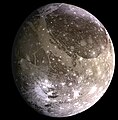|
تضامنًا مع حق الشعب الفلسطيني |
ملف:The Galilean satellites (the four largest moons of Jupiter).tif
اذهب إلى التنقل
اذهب إلى البحث
ملحق معالج الوسائط لتنسيق الملف هذا مفقود. قد لا تعمل ميزات الوسائط المتقدمة ما لم يتم عرض الملف [ https://commons.wikimedia.org/wiki/File:The_Galilean_satellites_(the_four_largest_moons_of_Jupiter).tif عند المستودع المشترك ].

حجم معاينة لذلك الملف ذي الامتداد TIF: 800 × 262 بكسل. البعدان الآخران: 320 × 105 بكسل | 640 × 210 بكسل.
الملف الأصلي (1٬830 × 600 بكسل حجم الملف: 1٫51 ميجابايت، نوع MIME: image/tiff)
تاريخ الملف
اضغط على زمن/تاريخ لرؤية الملف كما بدا في هذا الزمن.
| زمن/تاريخ | صورة مصغرة | الأبعاد | مستخدم | تعليق | |
|---|---|---|---|---|---|
| حالي | 16:54، 29 ديسمبر 2011 | 1٬830 × 600 (1٫51 ميجابايت) | commonswiki>Prof. Professorson | {{Information |Description=This composite includes the four largest moons of en:Jupiter which are known as the Galilean satellites. The Galilean satellites were first seen by the Italian astronomer en:Galileo Galilei in |
استخدام الملف
ال1 ملف التالي مكررات لهذا الملف (المزيد من التفاصيل):
- ملف:The Galilean satellites (the four largest moons of Jupiter).tif من ويكيميديا كومنز




